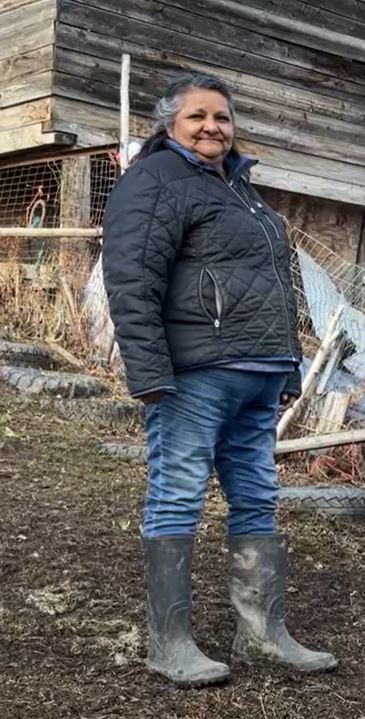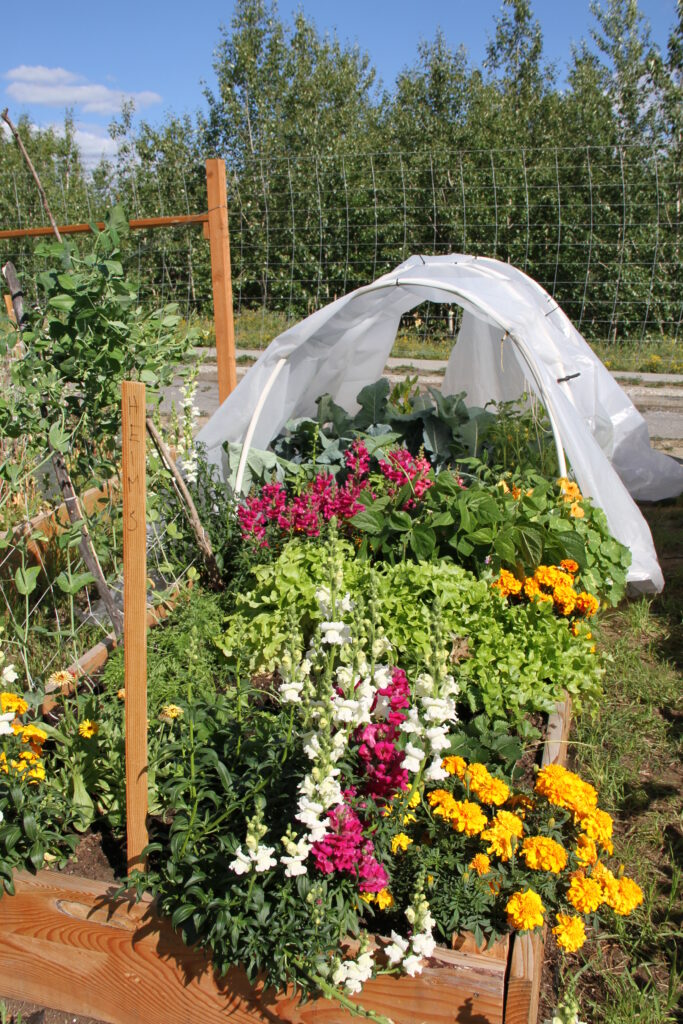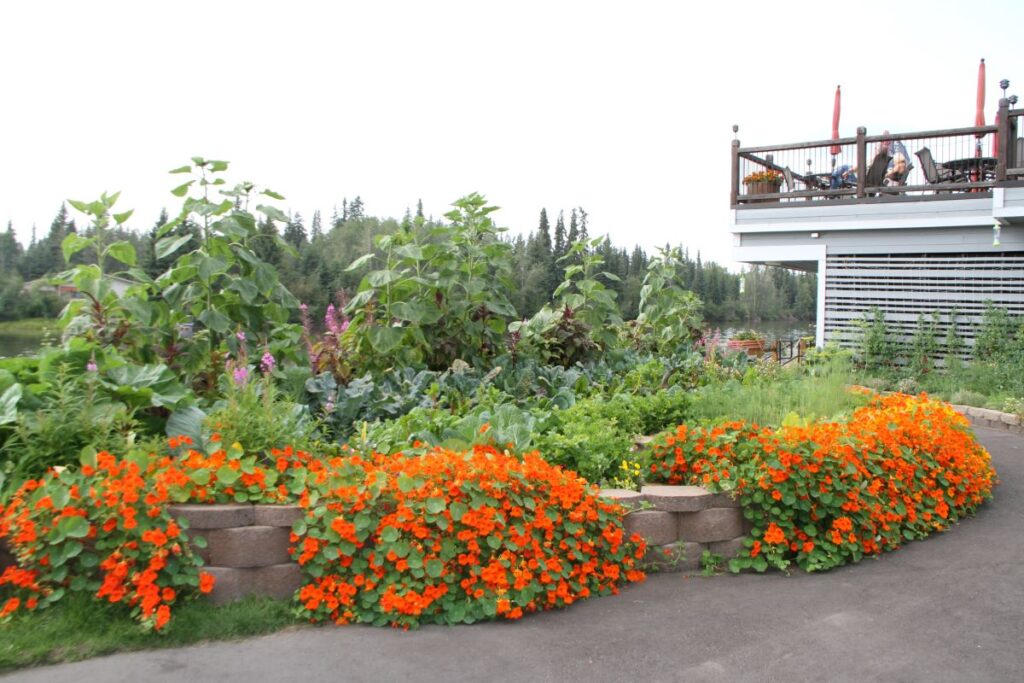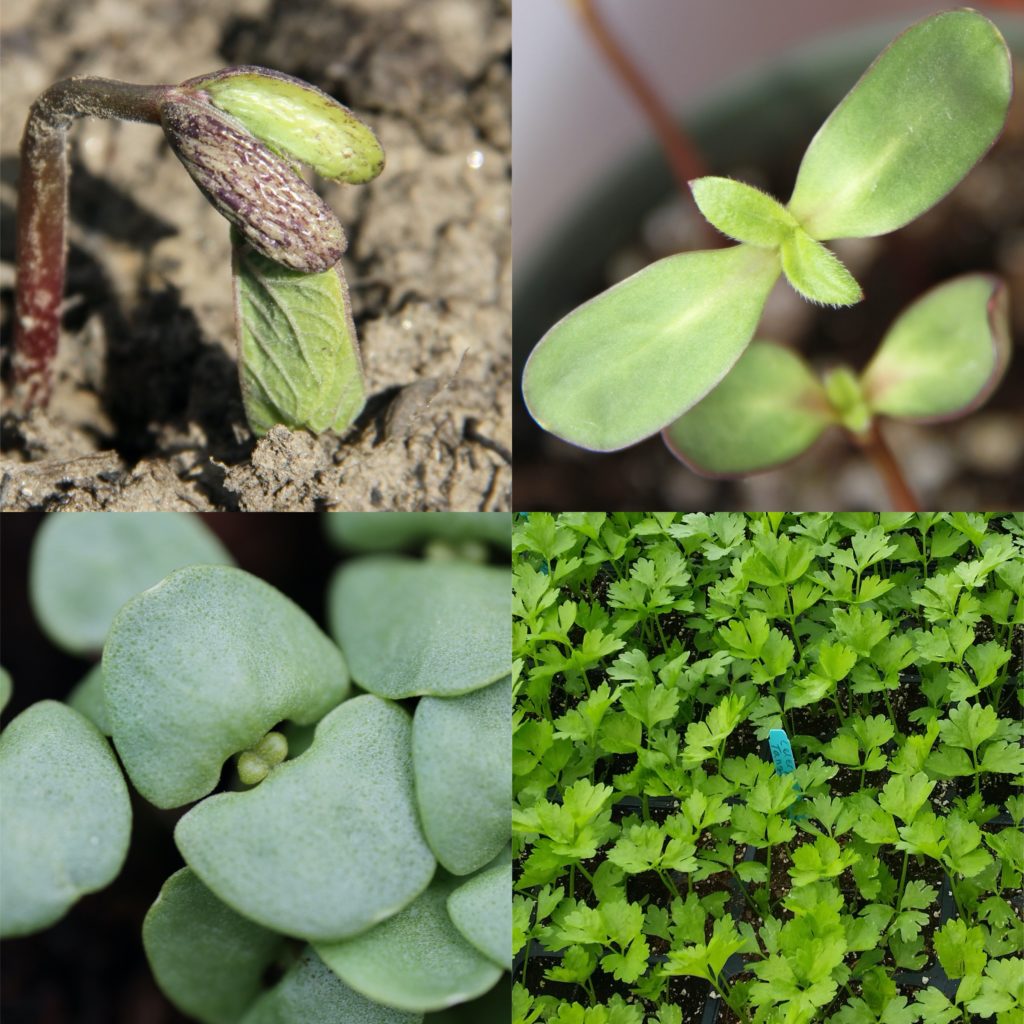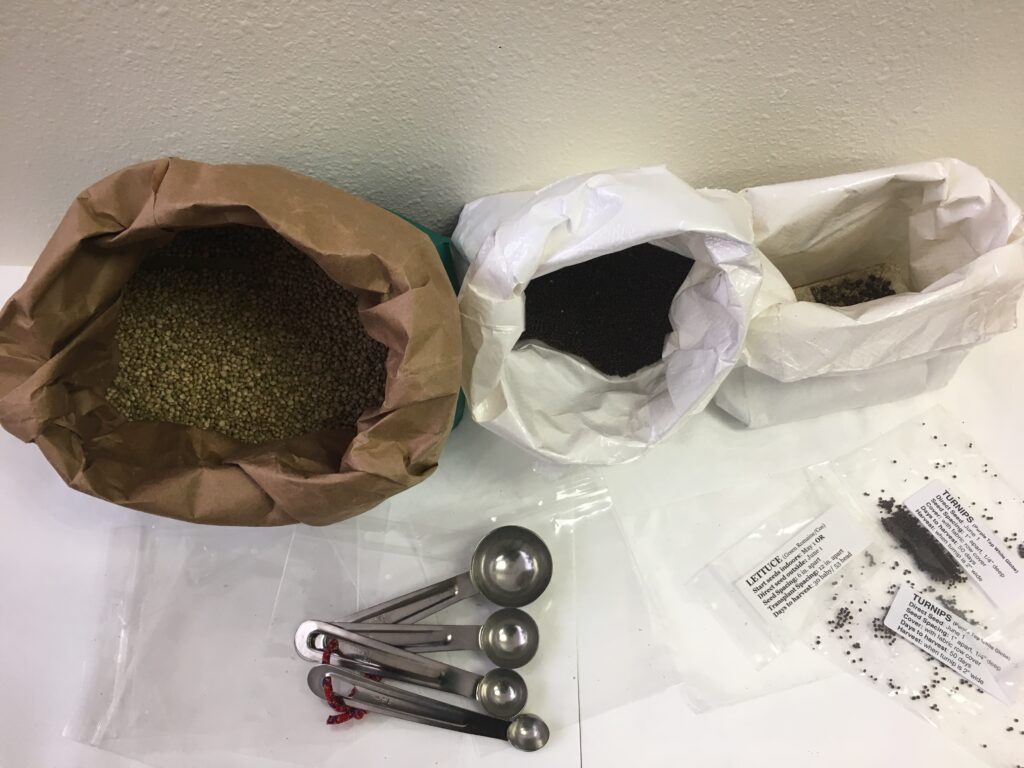It’s not hard to dream about what you will plant in your garden when the seed catalogs start arriving, or you go to the greenhouse and see the luscious vegetables and gorgeous flowers. However, an overcrowded garden will be less bounteous and beautiful than a thoughtfully planned one with adequately spaced plants.
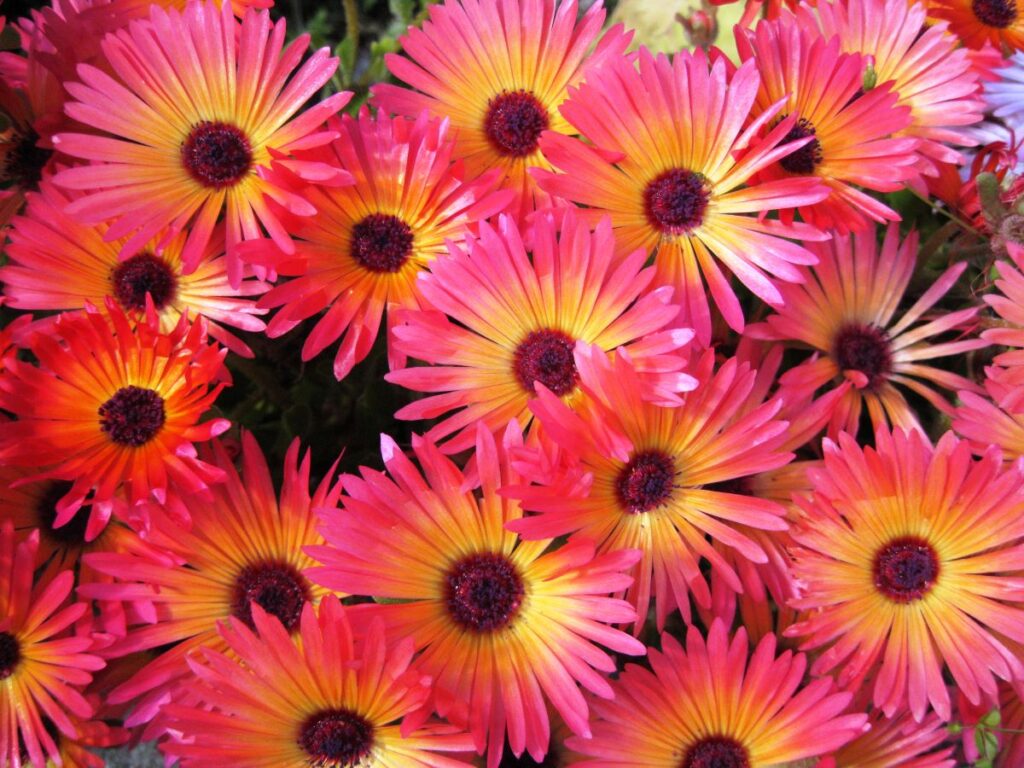
When choosing what to grow, try to find relevant information that is local, unbiased, and not profit-driven. Seed companies and catalogs are a great source of information, but they may not have done trials in Alaska. At the end of the day, they are also a business. When buying seeds, look for varieties that are identified as being adapted to short, cool growing seasons. For some crops like onions or strawberries you need to consider how day-length affects fruit maturation and keep your eye out for day-neutral varieties. For crops like spinach, look for bolt-resistant varieties. Take note that some varieties are developed to be grown in containers and some in a greenhouse.
Continue reading
